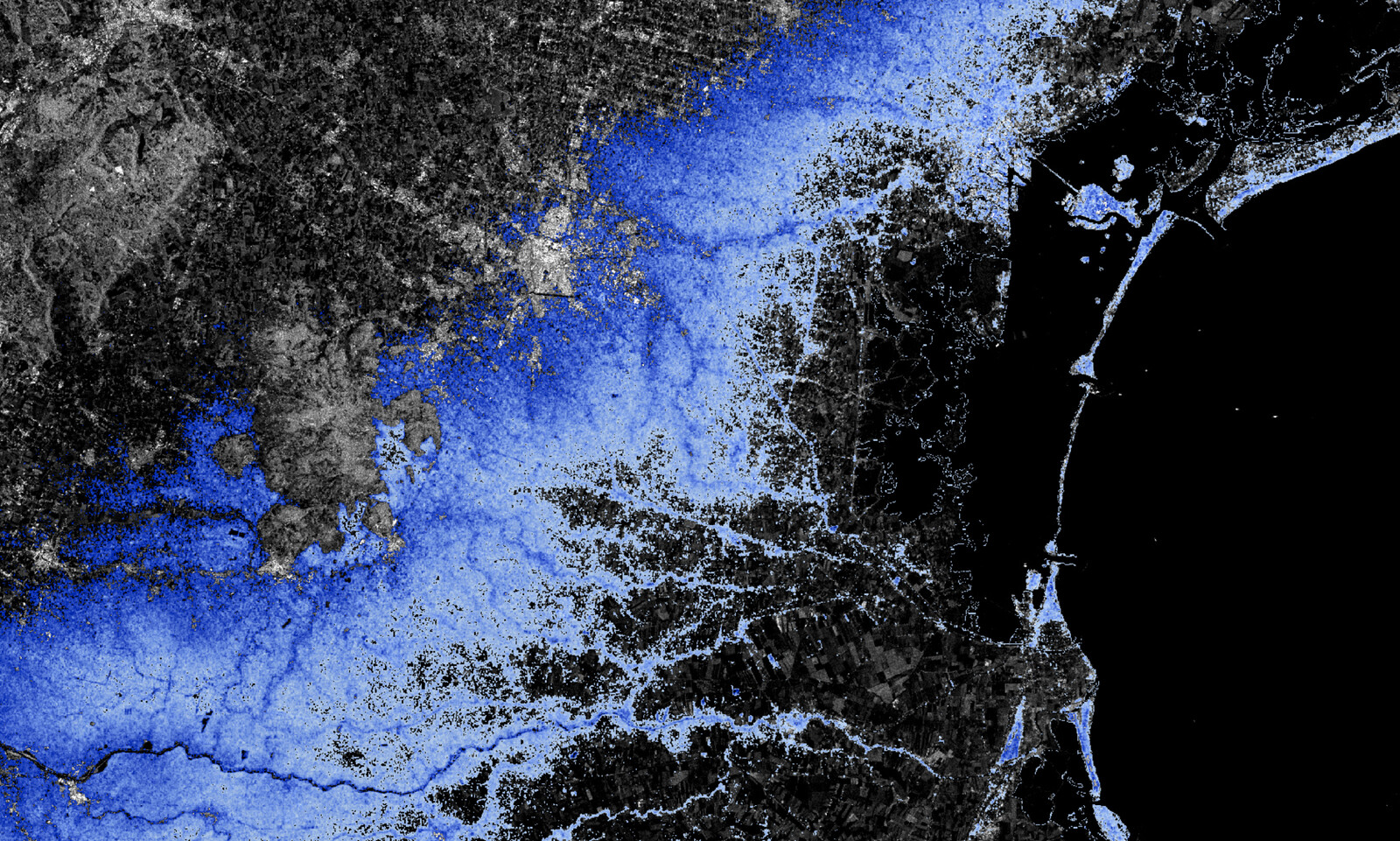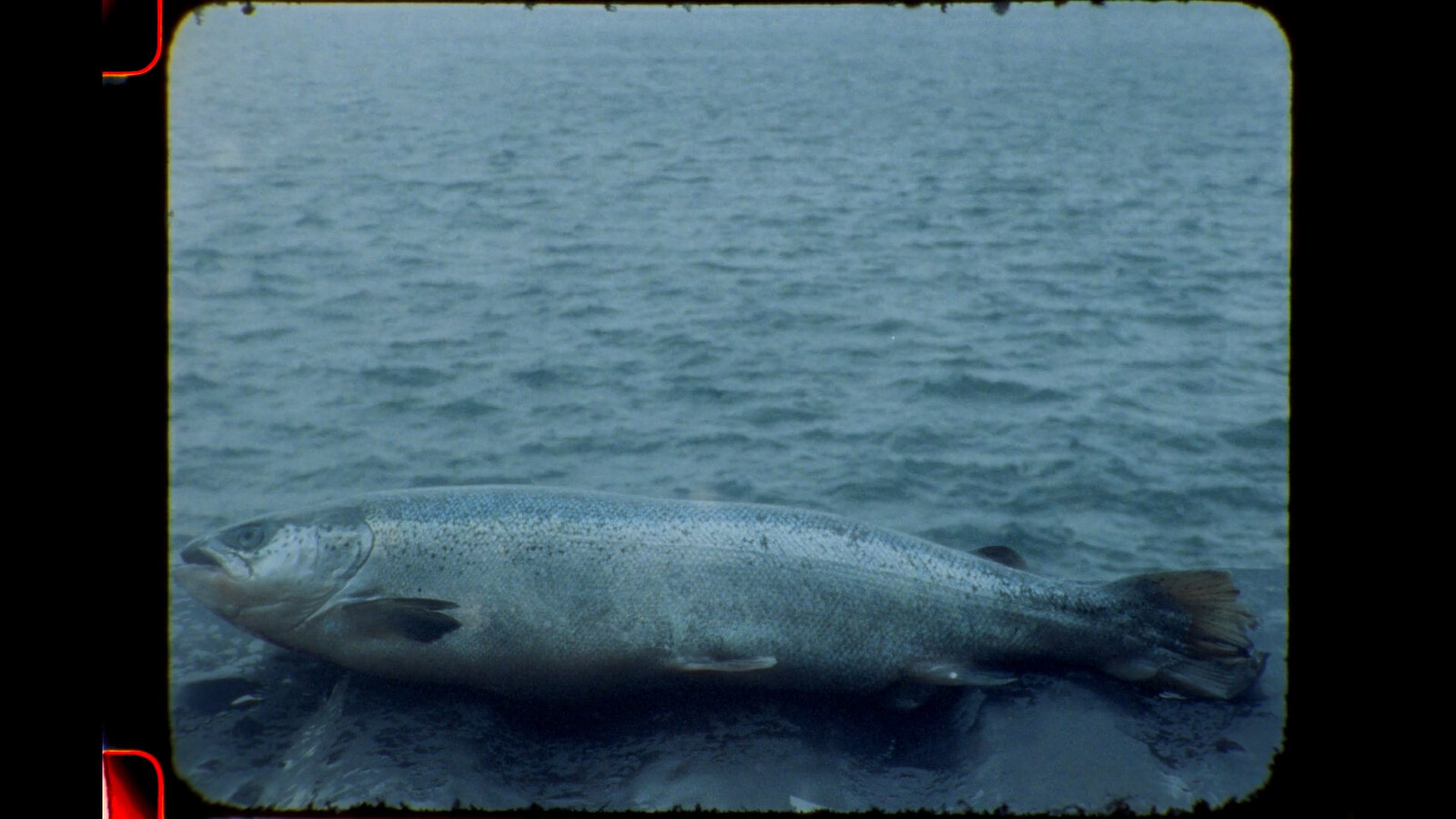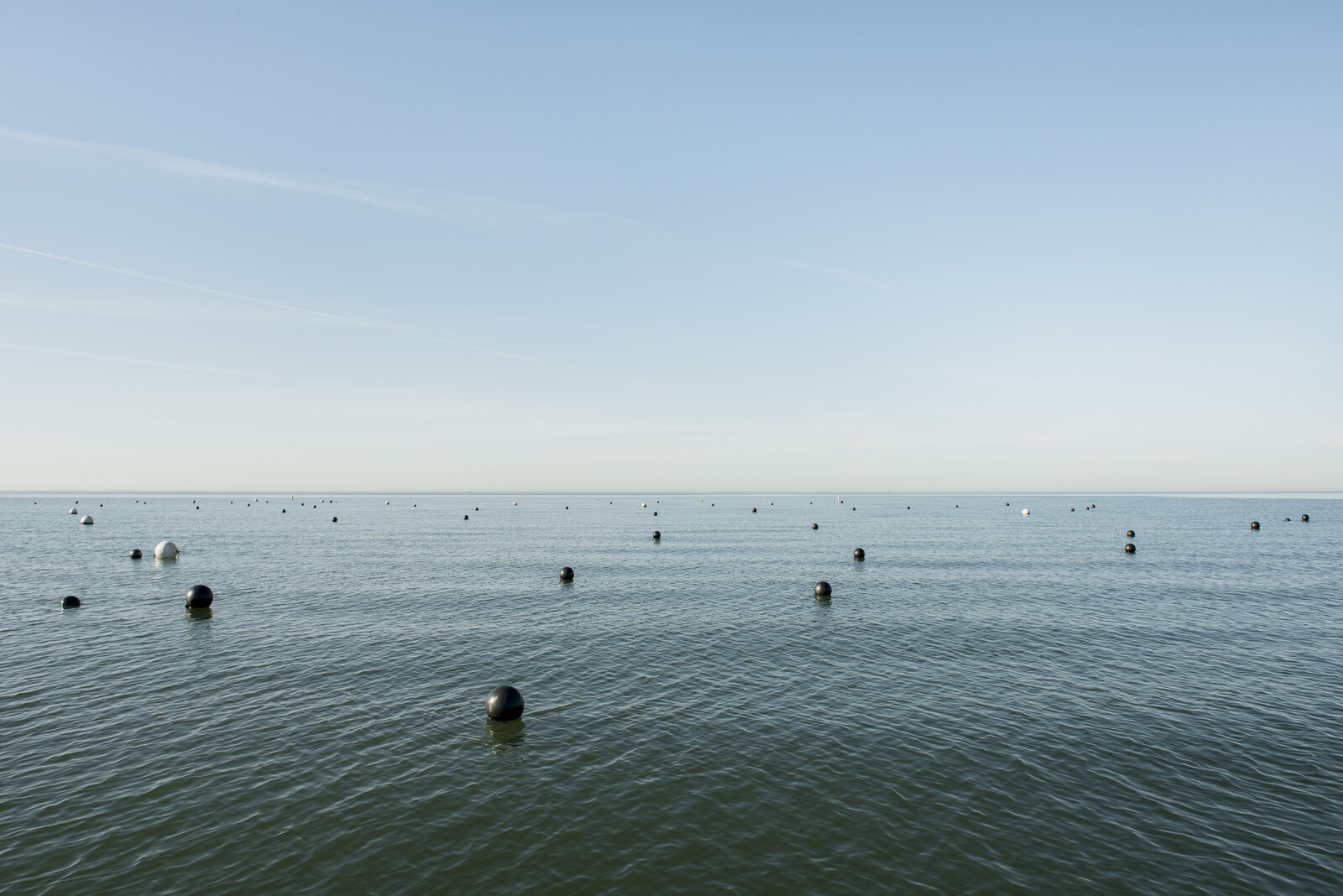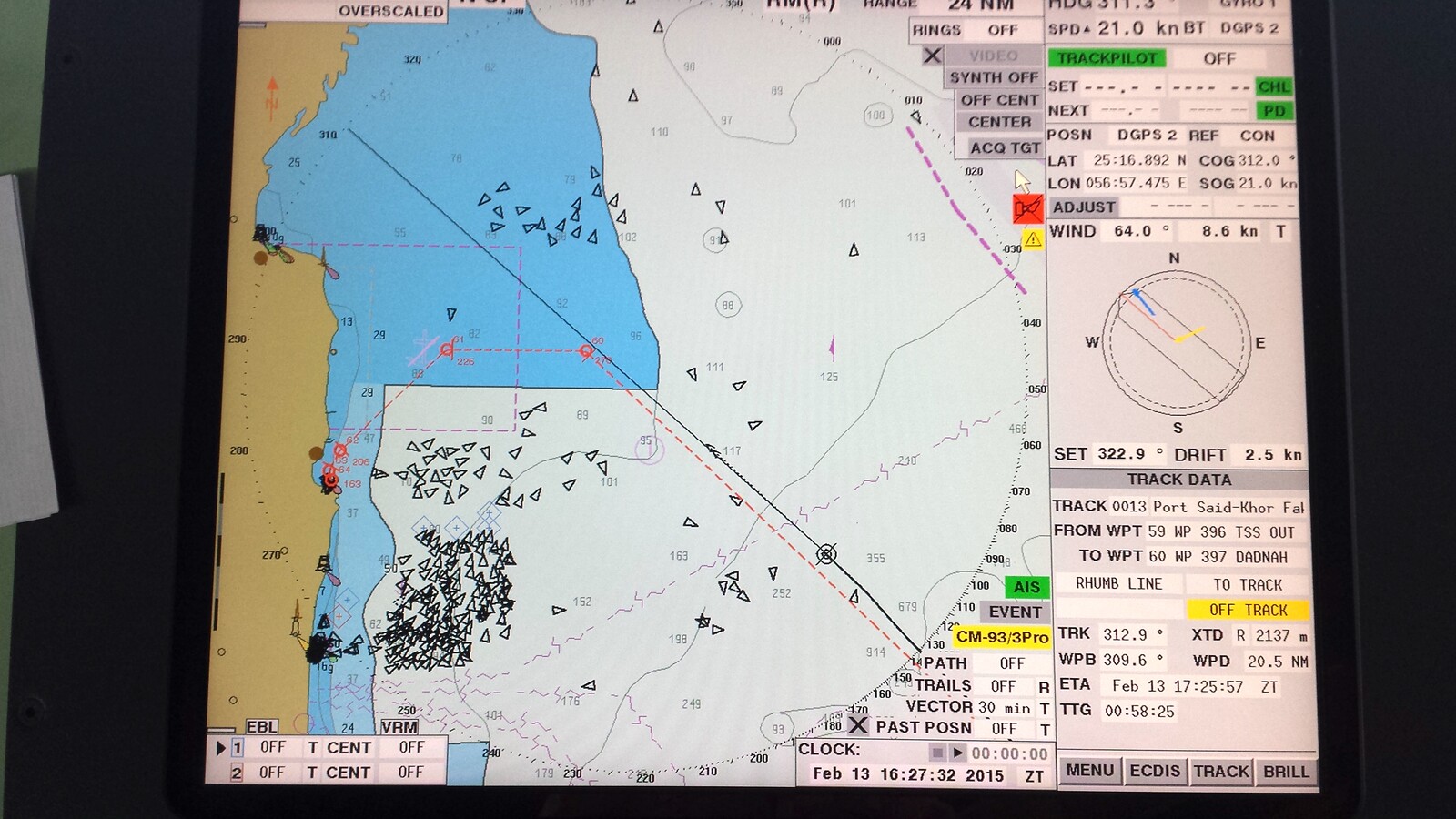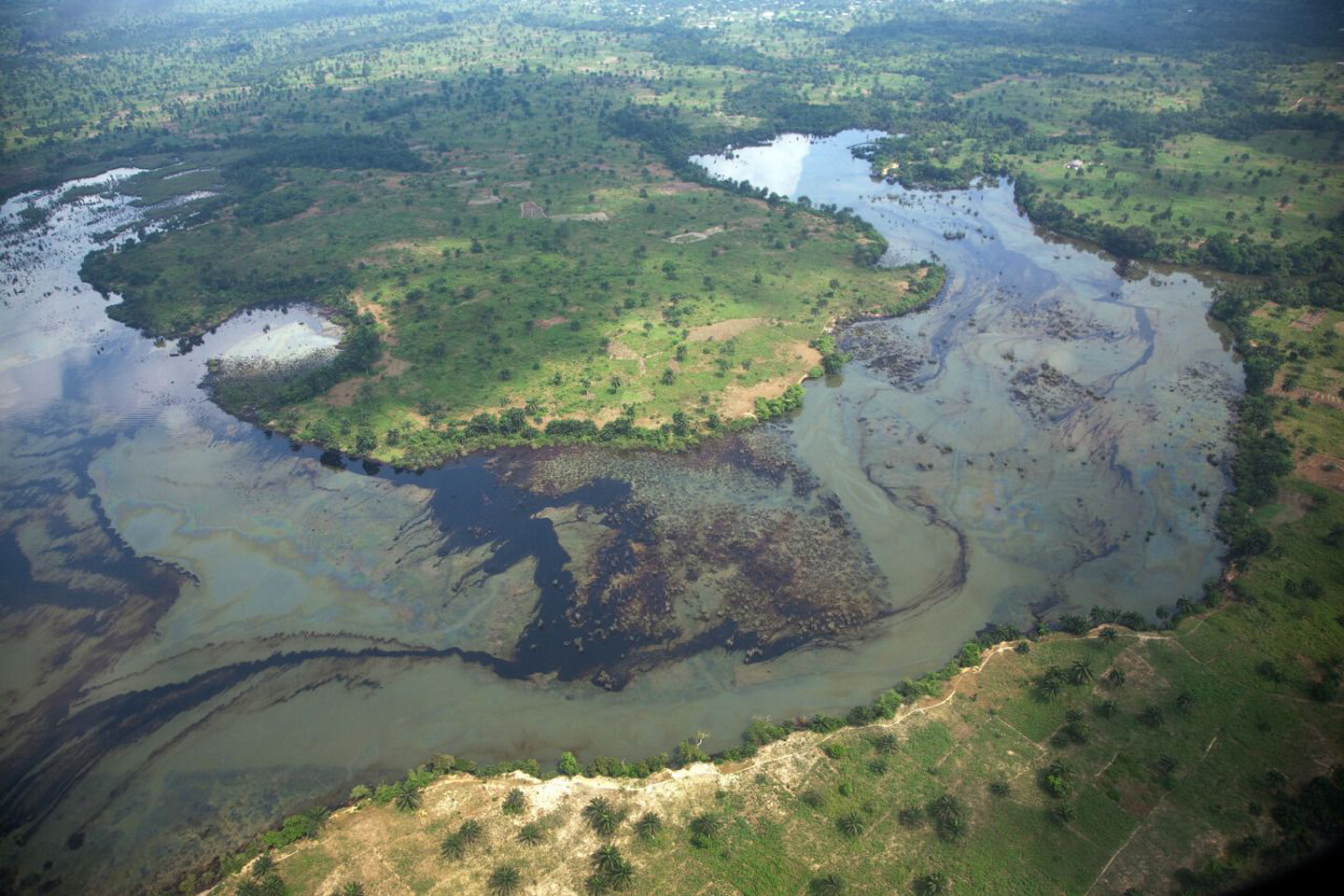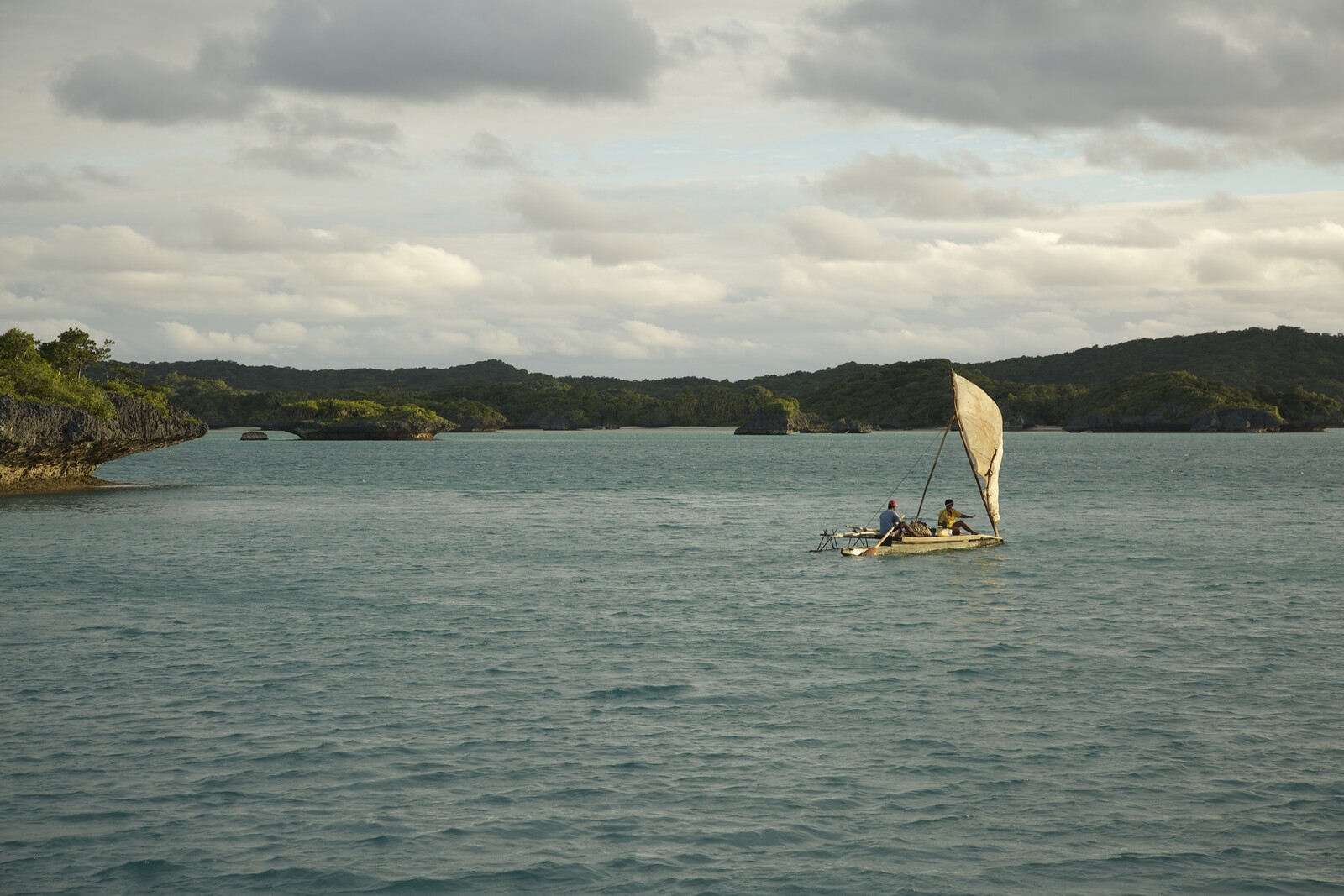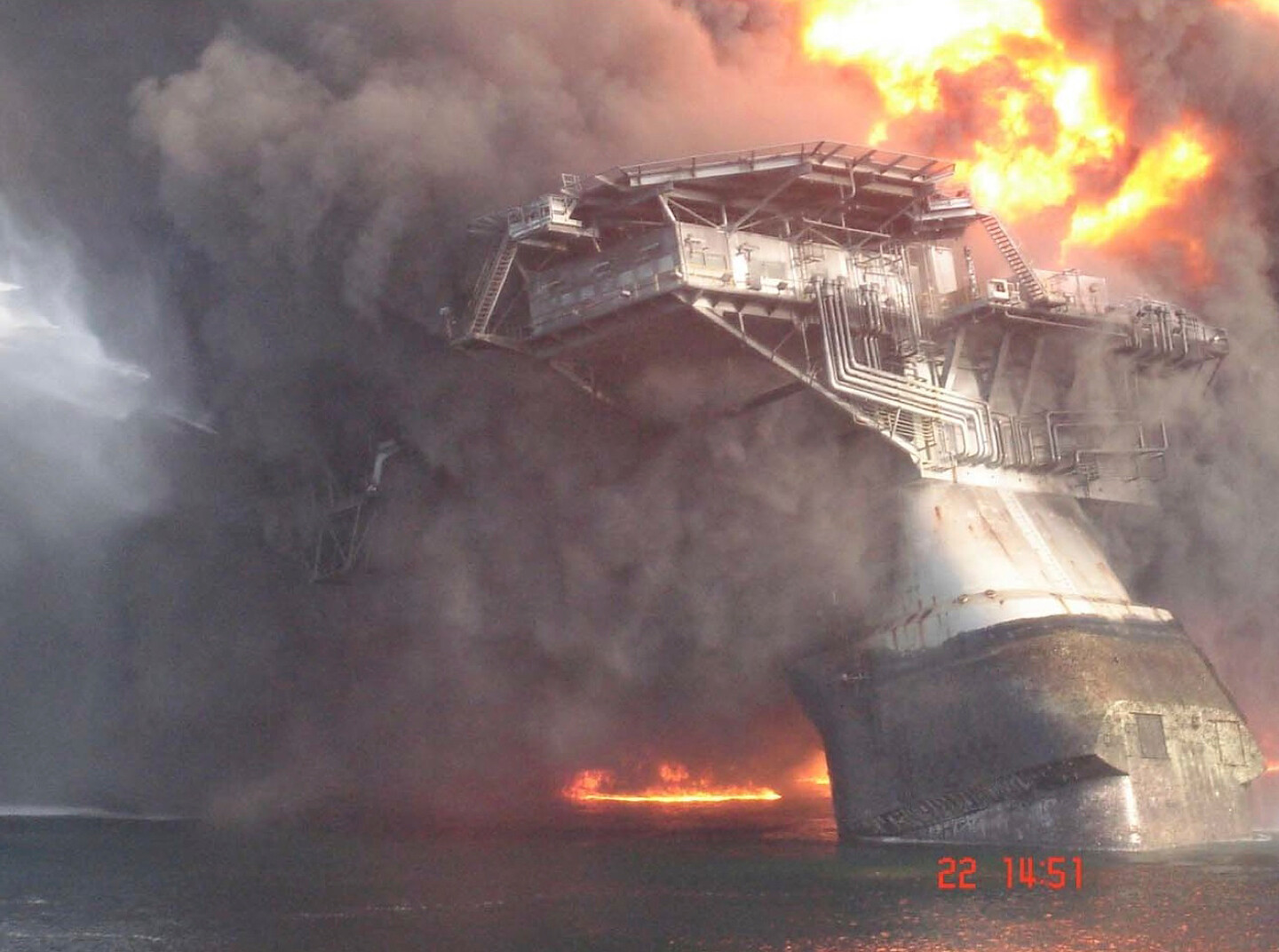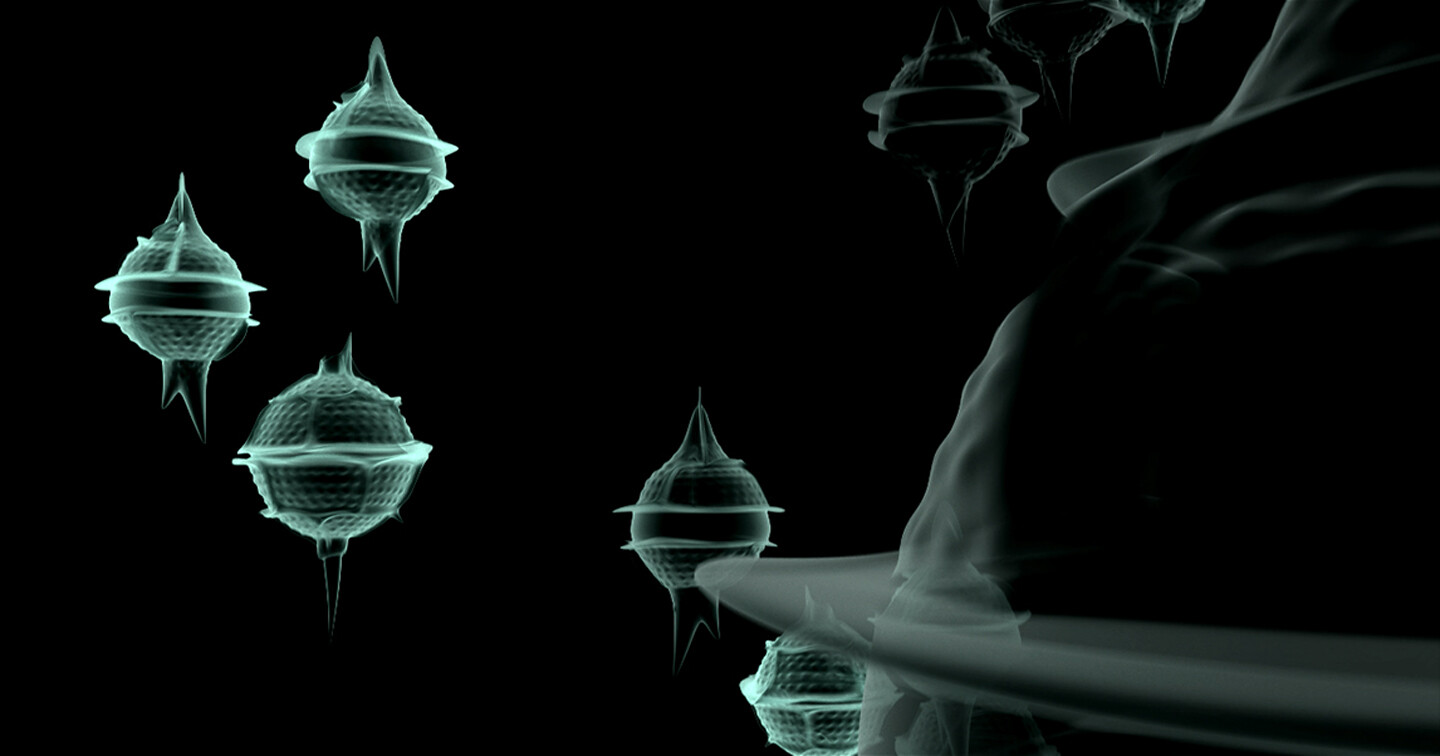0000
The horizon is the interception of sight with the surface of the planet. It is a space that marks both a position and a transient flux: it is a tangential condition. On land, horizons are rapidly transformed into demarcations and redistribution systems, boundaries and channeling spaces where differences are marked and inscribed.
When above dry land, horizons are how we articulate our location. Horizons both mark a location and form a backdrop. They are a multimodal space that rapidly exchanges materials and languages, that transforms material practices into discourses and ideologies. Horizons precede redistribution and ordering.
Together with complex property conceptualizations and techniques, horizons form the basis of territories: they shape discourses justifying inequalities, as well as their emancipatory, anti-systemic counterparts.1 They shape the stratified energy and material fluxes that keep an entity alive.
When above water, horizons shape capitalism and a globe available to pre-calculated risks, voyages, and coordinates. Horizons mark who is included and who is excluded, what can be owned and what is beyond the reach of humans.
When within water, however, a multiplicity of refractions and echoes reorient our gridded understanding of the worlds we inhabit. How is agency distributed? Who and what can own? Can a person own another? Can a person own public debt?2 Can land truly be owned?3 Ice? Streams of water?
0001
Today, sea level rise swells the horizons.
0002
The difficult realization of the impacts of human activity on the Earth is shaped by the growing horizon of sea level rise. Energy captured within the so-called Earth System by greenhouse gases released in the combustion of fossil fuels is warming our planet, melting the rich ice-worlds of the planet’s three poles, expanding the waters and changing the circulations and chemistry of the global ocean.4
The horizon of sea level rise is the interception of the complex vast machines of climate change sciences and the Blue Marble of the post-Apollo Earth. It is a new horizon made visible, apprehensible, through the elaborate mediations, oppositions, references, and articulations of the science, models, and institutions of the event of knowledge that is climate change. It is in many ways, it is a horizon that scatters and cuts across pre-established ones. It reshapes territories, narratives, knowledges and practices. It is a multiplier.
While undetected from within the capitalist World-System that unleashed the exponential energy consumption of the Anthropocene, the new horizon of sea level rise is enmeshed in the very technologies of survey and measurement that have enabled its expansion.5
How are we to understand the current sets of transformations changing the ocean without reverting to an all-sweeping new horizon, one single line of sight? How to become alert to the multiple refractions and circulations that are coupled in the making of the Anthropocene ocean? How to think anew the relations between polities and their horizons? How to inscribe the discourses of territoriality into the multiple circulations of the ocean? How can we think from and with the ocean?
0003
Sea level rise will be the largest project over the coming thirty years facing the future of human cohabitation.6 We might have just enough time to radically modify the areas that are going to be flooded into vast new spaces for sheltering populations and containing water, as well as large improvements to the biosphere that can lead to carbon sinks and repristinate marine and land ecosystems and their ecotones.7
We have just enough time to keep oil in the ground and reduce its dangers associated with global warming and the ecological crisis. The horizon of this urgent project is rapidly approximating the time left before we will have lost control. Renovating our respect for the ocean is a key in this, for its unpredictability and its majestic force, as well as for its hospitality. Rather than an impossibly large infrastructural engineering project, this is an opportunity for a renewed engagement of polities with their material spaces, their composite trophic cascades and ecological interconnections. It is the opportunity for a radical decolonization of our democracies, new forms of stewardship, and new structures of ownership. For a new architecture.
0004
Thinking and doing architecture at a planetary level is to engage with this tangential space, a space of multiple horizons and a plurality of simultaneous forces shaping our relationship to the Earth. Today, this relation thunders with the complex growl of climate change and the rise of the Anthropocene. To imagine a new architecture of the relationship between polities and their spaces—what they can own and how they redistribute value, how they include and exclude—is to shape an architecture of the ocean, one open on all sides, where a multiplicity of lines of sight constantly interact and inform one another. Horizons are always formed from within, and the precarious horizon of sea level rise is where the composition of this architecture might begin.

Multi-beam high resolution bathymetric data of the Venice Lagoon. ISMAR-CNR data elaborated by Territorial Agency.
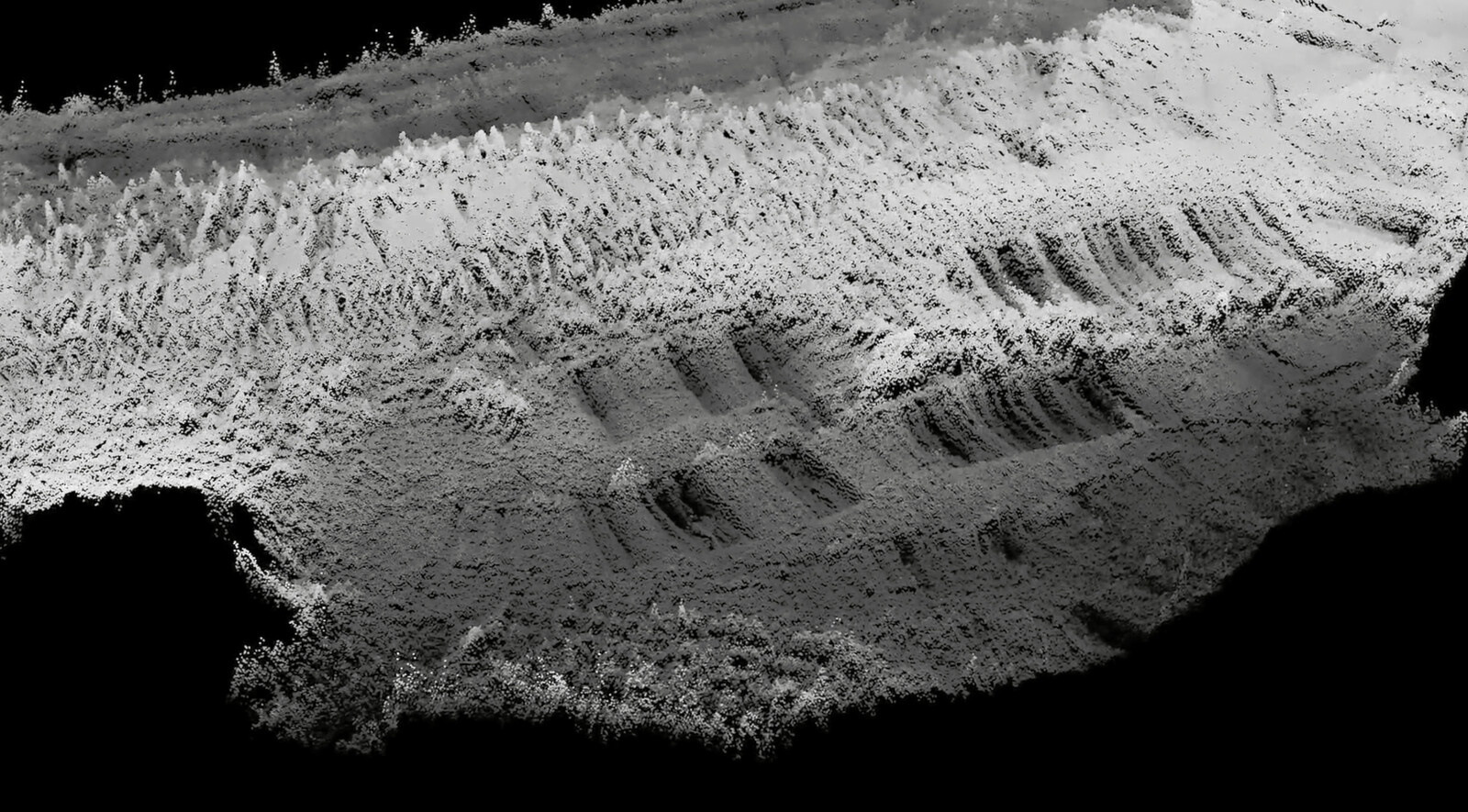
Multi-beam high resolution bathymetric data of the Venice Lagoon, showing the proximity of the MOSE sea barrier. ISMAR-CNR data elaborated by Territorial Agency.
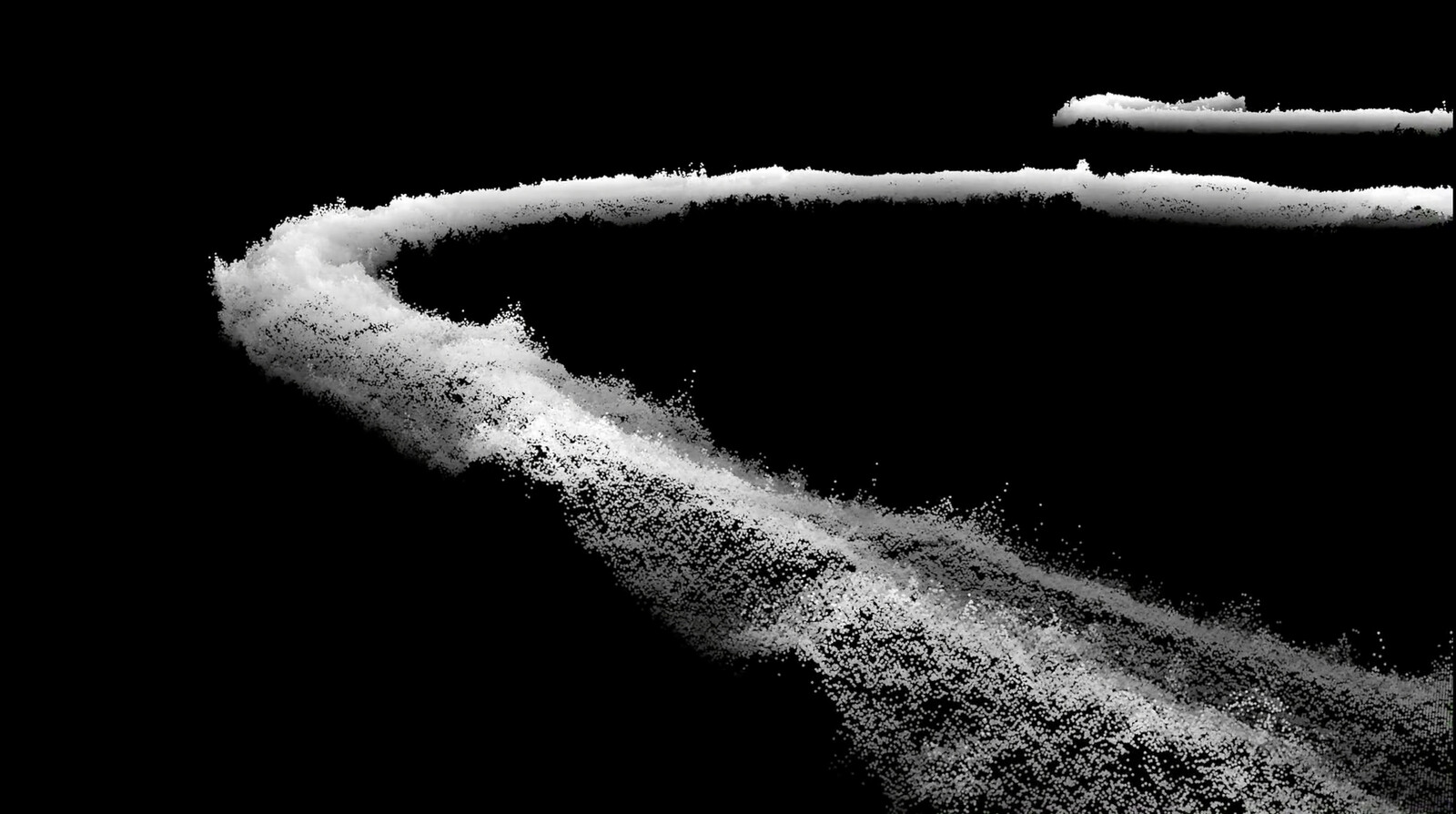
Multi-beam high resolution bathymetric data of the Venice Lagoon, showing the rich underwater vegetation in the canals crossing the marshes. ISMAR-CNR data elaborated by Territorial Agency.
Multi-beam high resolution bathymetric data of the Venice Lagoon. ISMAR-CNR data elaborated by Territorial Agency.
0005
Between 150–250 million people currently occupy land that lies below high tide lines projected for the end of this century.8 Recent reports indicate that these figures are conservative. Yet, the coastal areas affected by sea level rise are functionally much wider than areas in direct spatial proximity with the coast. Ashore, they are the expanded systems of supply and provisioning of food, materials, and energy of contemporary cities. From the shoreline outward at sea, they encounter the logistical systems of contemporary globalization, with the entangled infrastructural technical fibers that sustains human life. They operate the most crucial aspects of human settlements, with ports, harbors, hospitals, factories, resorts, and cities. They operate the outreaches of globalized hyper-capitalism and extractivism.
Under the IPCC’s Representative Concentration Pathway’s 2.6 and RCP8.5 for key indicators, carbon emissions scenarios currently indicate that there could be warming in this century that would lock in enough energy in the Earth System to cause sea levels to rise beyond the end-of-century forecasts of under two meters, and surge towards six meters.9 This would submerge lands currently occupied by 470–760 million people globally, mainly in East Asia, and affecting the immediate livelihoods of upwards than 1.5 billion people. This is what will happen if we meet the minimum targets of the UNFCCC Paris Agreement of warming of 2°C above pre-industrial levels.10
0006
Sea level is the interface between the ocean and the sky. It is the absolute fixed reference of both terrestrial altitude and marine depths. As a constantly moving surface, one that is influenced by the moon, the tides, salinity, local gravitational differences, atmospheric pressure, density and temperature of water, storms and local circulation of the sea, it is through the calculation of the averaged level across all phases of the tide that sea level is transformed into the ultimate basis for surveying and measuring.
Knowledge of sea level variations and an understanding of ice volume dynamics across glacial cycles, as well as short-term variations of global mean sea level is required by many aspects of earth sciences. global mean sea level is a complex model that combines a multiplicity of observations, tidal gauges, beamed radar radiation from satellites, buoys, and fixed observing stations. It is a model that needs to take into consideration land movement, data gaps, no data, calibration, and synchronization.
Not only is the surface of the ocean constantly in movement, but global mean sea level is also a dynamic measurement, with variations linked to technology and the availability of observations, with high variability and little consensus amongst scientists. Sea level constantly varies across time, over both short periods and the duration of long geological epochs, ages, and eons. Global mean sea level is measured through the complex works of historical records, archaeology, paleontology and paleogeography, stratigraphy and computational models. The uncertainty, even on the short period of human memory, is very high: the rate at which sea level rose during the twentieth century is reconstructed at being in a range between 1.3–2 millimeters per year.11
0007
When above the waters, our World-System has imagined forms of navigation, invented continuity, and managed to transform the incommensurable ocean into a charted space of calculated trajectories.12 In spite conceptualizing the free seas as a space of unbounded opportunity, exploration, encounters, and free trade, however, a harder reality of enclosure, blockades, and shipped people as goods has emerged throughout modern history.13 The imperial and colonial character of this World-System is more attuned to the architectures of apportioning and subdivision that the difficult currents, maelstroms, gusts, surges, and shoals of navigation. With the shift from sailboats to coal powered steamboats,14 the oceans were turned into extensions of rivers and canals, with the inward journeys deep into the rich lands of Asia, Africa, and the Americas turning into a seamless bureaucratic affair. This capillary reach of fresh water trade is what still characterizes contemporary logistical systems, with shipment and being shipped its post-imperial hallmark.15
0008
When above, were not raised heavens;
and below on the earth a plant had not grown up;
The abyss also had not broken open their boundaries:
The chaos (or water) Tiamat (the sea) was the producing-mother of the whole of them.
Those waters at the beginning were ordained; but
a tree had not grown, a flower had not unfolded.
When the gods had not sprung up, any one of them;
a plant had not grown, and order did not exist;
Were made also the great gods,
the gods Lahmu and Lahamu they caused to come …..16
The Mesopotamian creation myth Enûma Eliš, which derives its title from the opening lines “When above,” is inscribed on seven clay tablets in Old Babylonian Akkadian Cuneiform language. It was discovered in fragmentary form at Ashurbanipal’s Library at Nineveh, Ashur, Kish, Sultanepe, and in other sites by British archaeologist Austen Henry Layard in 1849. The tablets date to ca. 1200 BCE, but the cuneiform inscriptions indicate that they are a copy of older versions of the myth long predating the fall of Sumer, ca. 1750 BCE.17 Creation myths from this region all refer to great floods, and the following attempts at maintaining a clear-cut distancing between water and land: no space for muddled waters, for unclear identifications.
The early Holocene sea level rise (EHSLR) was a consistent increase in sea level of around sixty meters following the high of the previous glaciation, between 12,000–7,000 years ago.18 Low-lying coastal areas were flooded and their populations, early settlers and farmers, were forced on the move. This period of rapid sea level rise is associated with the spread of Neolithic culture into Europe, as well as the 8.2 kiloyear cooling event that facilitated the development of Mesopotamian irrigation, agriculture, and surplus production.19
The mixing of salty waters with runoff of the rivers where early agriculture developed was a largely catastrophic event. The source of this new water volume has been traced either to the melting and collapse of large swathes of the Antarctic ice sheet or a location in the Northern Hemisphere, most probably the Laurentide Ice Sheet.20
While it has now become common stance to cast the rise of the Anthropocene against the long, almost-stable climatic balance of the Holocene, catastrophic sea level rise events are associated in the Holocene’s early documented history with large and complex reorganizations of human cohabitation, the invention of new polities, new narratives of inclusion, and the renewal of concepts of property. These processes are hallmarked in distinctions and separation; with the slow and difficult recombination of the horizons shattered and scattered by the sea.
0010
In these early stages of the Anthropocene epoch, sea level rise is caused mainly by thermal expansion of the ocean. The ocean is getting warmer because carbon dioxide in the atmosphere produced by burning oil, gas, and coal is accumulating faster than it is recycled by the biosphere and the ocean. The burning of fossil carbon has triggered the rise of not just the Anthropocene, but also the technosphere. For the ca. 541 million years of the Phanerozoic Eon, the geologic eon we find ourselves at the forefront of, marine and terrestrial ecosystem evolution has been marked by important trace fossils. The rapid increase in energy harnessed by humans is discernible in the increased dimension and distribution of human trace fossils.
The widespread presence of domesticated animals, agrarian spaces, settlements, roads, cities, and plantations that started ca. 10,000 years ago accelerated during the second half of the twentieth century to the point where many human trace fossils currently extend for hundreds of square miles, with a geometric and material complexity unprecedented in geological history.21 The bio-stratigraphical markers of the Anthropocene are unprecedented in their energy intensity, spatial distribution, and material complexity. New techno-fossils are stretching out everywhere, there is no more any distinction between lands, skies and waters.
0011
Today, observations of the Arctic Ocean indicate it has turned into a vast estuary. Its rivers are rapidly carrying fresh, dark water plentiful with suspended organic particles from the melting of the ice worlds and the permafrost of peatlands and tundra at higher latitudes.22 Salty waters and fresh waters are mixing fast, with vast repercussions on the global circulation and lives of the ocean. The new freshwater from the Arctic and/or its heat enters the North Atlantic and can hinder the formation of the density-driven North Atlantic Deep Water, leading to the reorganization of the Atlantic Thermohaline Circulation (THC).
These are elements of a complex global ocean-atmosphere-land circulation model, where small perturbations at a critical threshold can radically alter the state and development of the Earth system. Tipping points are critical moments in the evolution of the Earth, denoted by tangential and asymptotic conditions of its dynamic states.
0012
The technosphere has cut through territories and pre-established forms of life, deeply scraping the surfaces of lands, mountains, forests, ice sheets, seabeds, waters, microbial ecologies, species distributions, viruses, neobiota, artificial materials, information, and energy fluxes.23
The technosphere—all that sustains contemporary humanity—is a globally emerging figure, a new paradigm of the Earth yet to be outlined and fully understood, with an estimated energy consumption of more than 567 exajoules.24 The technosphere is the only Earth paradigm not recycling. The biosphere, lithosphere, cryosphere, hydrosphere, geosphere, and the atmosphere are all engaged in complex Gaia articulations, stratifications, and re-circulations that maintain life on our planet. The technosphere, which we have estimated is expanding upwards of thirty trillion tons in mass, is a vast accumulation of detritus, with atmospheric CO₂ being the most elusive and difficult to understand for many.25
The technosphere baffles architecture. From within, it appears as the result of the multiple projects, designs, actions, and processes of humans that are within the remit of control and capacity to act. From the outset, however, humans are only a component of it, drawn into its functioning and endeavoring for its sustainment.
0013
The “objective, instrumented, and corrected knowledge” of climate change is, at the horizon of sea level rise, in close proximity with technological artefacts, buoys, soundings, points of contact between cultures, different institutions and concepts of time, diverging trajectories of secularization, multitudes of narratives, complex negotiation protocols, satellite data receiving stations, non-instrumental navigation know-hows, different forms of interpersonal contact, entry protocols, objects and books, buildings and vessels, coral reefs and underwater cables, imperial pasts, trawling and dams, intertidal ecological surveys, long-term patterns of inhabitation, myths, international law, and hypoxic waters.26 The proximities between these agencies and the many ways they dissolve into one another make the knowledge of climate change both fragile and complex. Their proximity is what marks the form-making processes of an alternative architecture.
0014
Putting into form the multiplicity of these proximities and their dissolvents appears at first to be at odds with the little time we have left to re-imagine and build a new architecture for a world with increasing temperatures, growing inequalities, ecological crisis, and rapid sea level rise.
The impetus behind such an architectural project is to fix, to have an attainable and stable reference, to organize fast and rectify, to maintain and hold onto reference points. It is, in short, to provide solid ground; to be landed. What if we would think a new fragile composition, one able to engage with a world rapidly changing, from the ocean? And what if the distinction between a fixed land and a constantly moving ocean would be undone? The whole point is to start operating as if this is already the case.
0015
Venice, the Mediterranean. Then Amsterdam, London, the Atlantic. Modern European history, and modern euro-centric histories, hinge on sea change.27 Accompanied by multiple turbulences, the World-Systems of modern capitalism cut across territories, transforming ancient markers and warning signs into inert artefacts. The stormy centuries that shaped the modern histories of the Mediterranean are swiveled towards the Atlantic’s grey-blue waters. They established new forms of inclusion and exclusion, marking new territories where ownership of people is the economic basis for the establishment of “new” lands. Powerful discourses of justification of inequality and new forms of property subjected their previous inhabitants and forms of life.
Sea change also turned the waters of the Atlantic black. The instabilities that accompanied sea change—from the Mediterranean World-Economy centered on cosmopolitan Venice towards the capitalist World-System of the Atlantic centered initially on the Low Lands, then onto London—are the same turbulences out of which the great acceleration of the oil polities of the late twentieth and early twenty-first century have emerged, and with them, the Anthropocene.
0016
In the recent past, Venice has been the opposite of a model for the future. Its paradoxical disjunction of the old city with its incommensurable beauties and riches, and the fragile systems of governance and stewardship of the lagoon, is an indicator of how disastrous it is to imagine and shape inhabitation along rapidly changing coastlines and wetlands.
Yet, over the long duration of the lagoon’s formation and metamorphosis, Venice closely resembles what political economist Elinor Ostrom indicated as progressive ways through which people could manage themselves the resources they depended on.28 Venetian merchants stayed in a difficult amphibious environment, endeavored to stabilize its ecologies, its hydrology, and its interconnections by establishing clear yet cosmopolitan polities, with the intent to endure.
When thinking the coming urgency to transform the vast lowlands of the world into Gaia-devices that can contribute to the homeostasis of our planet’s climate, we might have to reinvent and renew similar polities, enmeshed as they are with their material spaces. Such a project would require new forms of narrative of what it means to own, new justification systems and ideologies to give account of inequalities and exclusions.
First, however, it would require a redefinition of horizons. Far from calling for a mobilization of polities to be in touch with their natural spaces, we would need new forms of architecture to renegotiate territory.
0017
The strong storms that engendered Venice’s acqua granda of November 4, 1966 produced a flood 1.94 centimeters high that swept across 96% of the city. On the night of November 12, 2019, a different conjunction of tide, scirocco winds, and storm gusts pushed the waters to 1.87 centimeters high, flooding 85% of the beautiful and decaying city.29 In between, there has been more than half a century of endeavors to measure, contain, forecast, and engineer a protection for the city, with limitless controversies, experiments (MOSEs, etc.), and disillusions.
A new architecture facing sea level rise needs to be an architecture in constant transformation, in constant renegotiation of the connections between different polities and their spaces of operation. It cannot imagine a pacification, a settlement of disputes. Instead, it needs to constantly reinvent itself within these disputes. Incomplete, adaptable, open for revision, a new architecture of cohabitation along the shores of rapidly swelling seas needs to be imagined and developed.
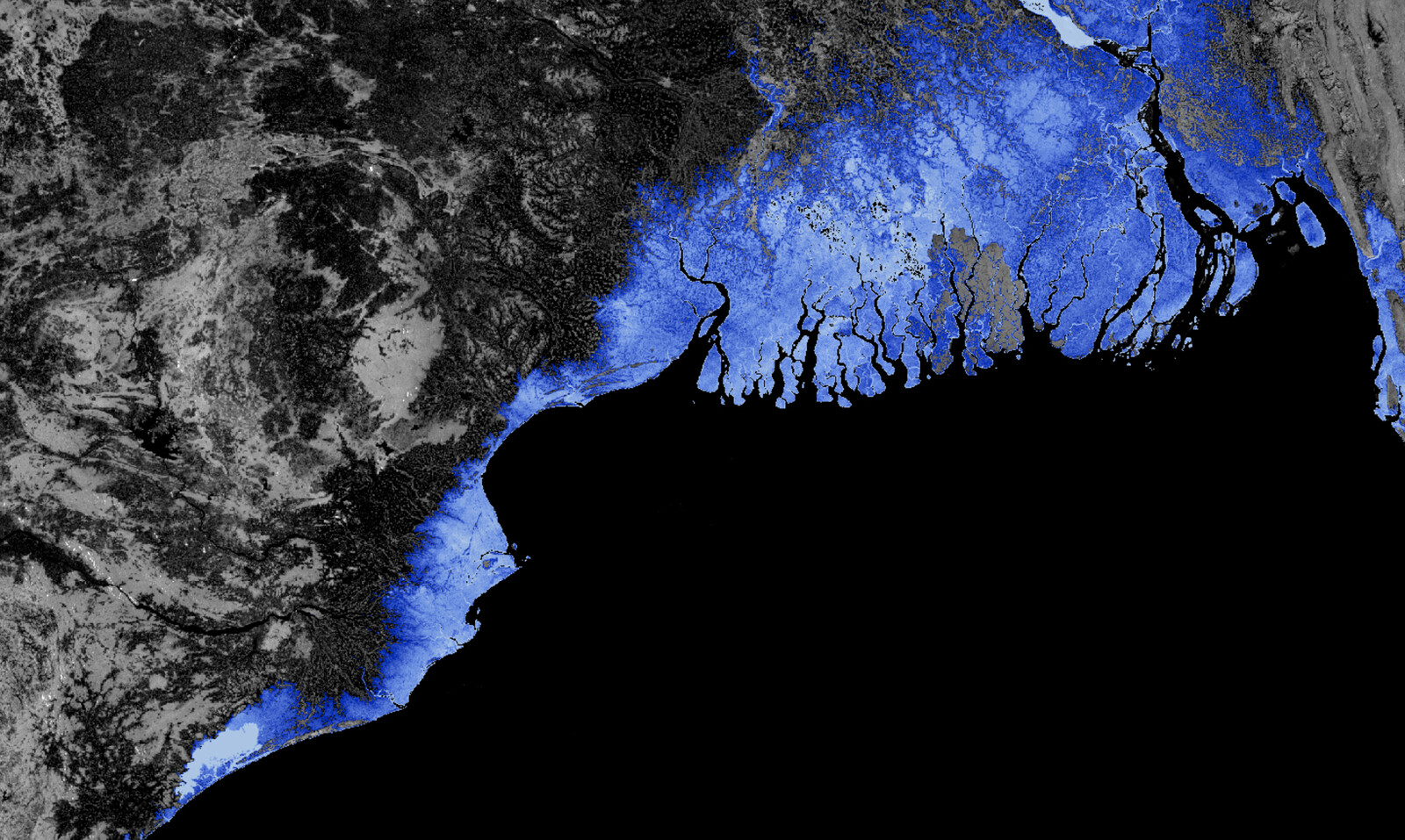
The Ganges-Brahmaputra-Megna Delta in the Gulf of Bengal. Locked-in prospective sea level rise caused by global warming at +1.5°C, +2°C, and 3° above preindustrial levels, combined with digital elevation model DEM derived from the Shuttle Radar Topography Mission SRTM, and seamless global mosaic of PALSAR/PALSAR-2 synthetic aperture radar imagery from 2018. Data elaborated by Territorial Agency.
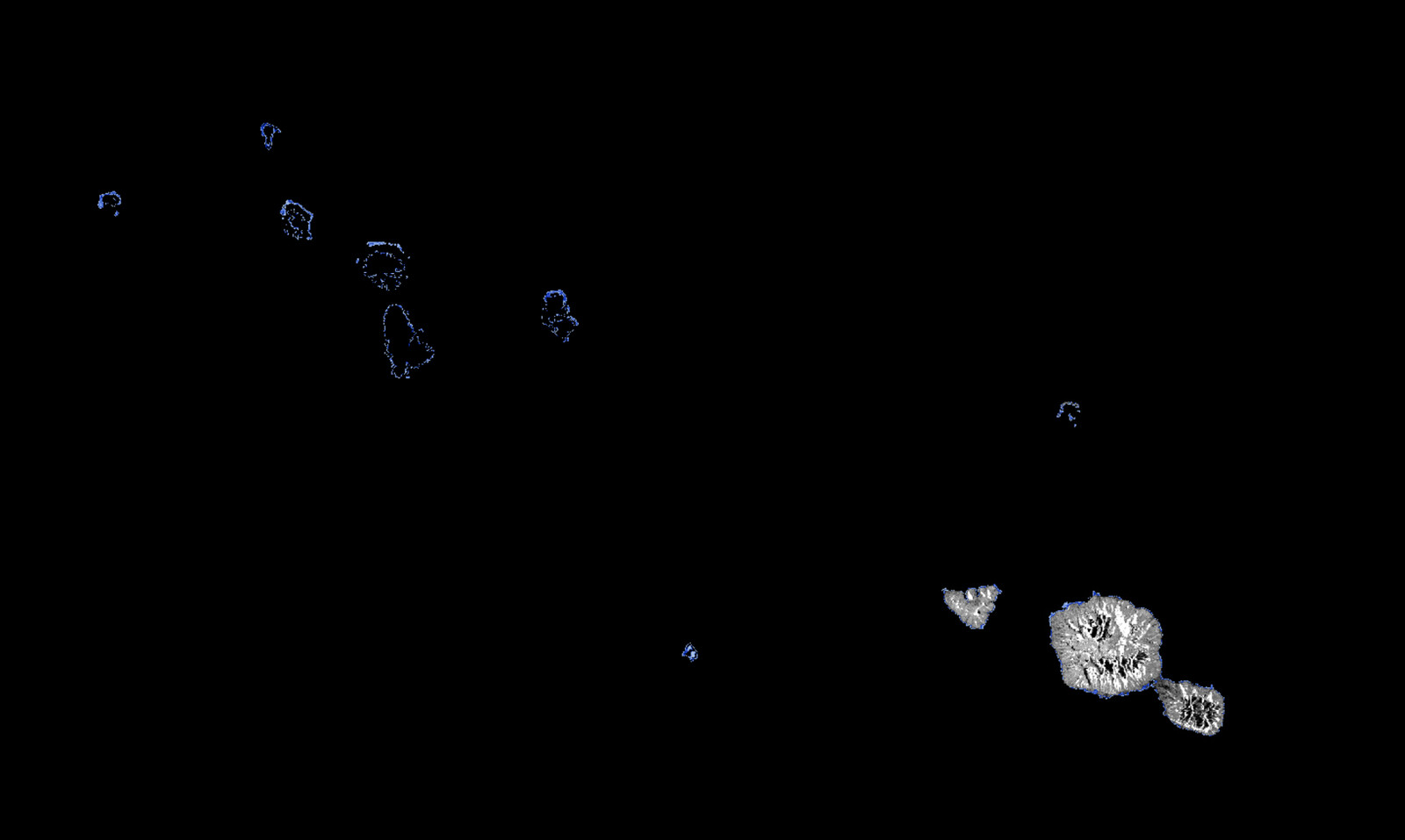
Tōtaiete mā, Society Islands. Locked-in prospective sea level rise caused by global warming at +1.5°C, +2°C, and 3° above preindustrial levels, combined with digital elevation model DEM derived from the Shuttle Radar Topography Mission SRTM, and seamless global mosaic of PALSAR/PALSAR-2 synthetic aperture radar imagery from 2018. Data elaborated by Territorial Agency.

Shanghai and its low-lying coastal hinterlands. Locked-in prospective sea level rise caused by global warming at +1.5°C, +2°C, and 3° above preindustrial levels, combined with digital elevation model DEM derived from the Shuttle Radar Topography Mission SRTM, and seamless global mosaic of PALSAR/PALSAR-2 synthetic aperture radar imagery from 2018. Data elaborated by Territorial Agency.
The Ganges-Brahmaputra-Megna Delta in the Gulf of Bengal. Locked-in prospective sea level rise caused by global warming at +1.5°C, +2°C, and 3° above preindustrial levels, combined with digital elevation model DEM derived from the Shuttle Radar Topography Mission SRTM, and seamless global mosaic of PALSAR/PALSAR-2 synthetic aperture radar imagery from 2018. Data elaborated by Territorial Agency.
0018
For millennia, the Mediterranean has been a vast space of circulation; a long duration of forms of life and exchange. The Mediterranean has been a quasi-stable material world that has shaped the form of multiple polities, exchanging and circulating their words, scripts, moneys, and artefacts well beyond its shores. Its cosmopolitan world extended deep into Asia, Arabia, the Red Sea, and beyond the Gulf of Aden, the Monsoon-dominated waters of the Arabian Sea. Now, it is rapidly changing into a xeno-deep; a space where identities and trajectories are being solidified and channeled along pre-established routes and procedures; where avoidance is the spatial modus operandi; where ordering and controlling are established as technical procedures that rarely morph into cultural encounters.
The Solid Sea of the Mediterranean appears as a premonition of larger relations between the sea and its uncertain surrounding inhabited landscapes.30 Beyond our sight, beyond our horizons, these spaces of increased identification, death, drowning, incarceration, control, and simplification operate in a state of invisibility that eludes attempts to draw new light to them and articulate new forms of cognition. Here, to know more does not entail an increased capacity to act. Everyone knows what is happening, yet no one can articulate clear courses of action.
0019
The time horizons of sea level rise are quickly changing. Dark waters carrying organic suspended particles are flowing from the melting tundra into the Arctic Ocean; bright blue ponds and streams are forming rapidly on the ice sheet of Greenland; the ice-worlds of the Himalayas are melting and reshaping both the lakes of the Tibetan plateau as the rolling waters of India, Pakistan, and Bangladesh. The circum-Himalayan rivers are deeply modifying their deltas. Glaciers are directly meeting warm currents and melting away. Sea ice in the Arctic is entering its last decades. The permafrost of the Alps is melting away faster than we can start seriously discussing even how to sense it. Large icebergs are breaking off the coasts of Antarctica. The heated waters of the ocean are expanding. Increased storms are hitting coastlines, with their intensity getting closer to the shores. Deltas are rapidly eroding. The Great Island Nations of the Pacific and Indian Oceans are directly facing the new swelling horizons. What a few years ago seemed to be a distant future is now.
0020
Nothing is beyond the horizon of the climate and ecological crisis. It is an event that has brought together a multiplicity of encounters between new planetary knowledge and old ways of being, between different epistemes and religions, between differentiated distribution of agencies. These difficult encounters, and these many attempts to make them commensurable reveal that the vast and urgent project to redesign the coasts cannot be a call to unite behind a newfound connection to oceanic spaces or what used to be called nature.
0021
Initially-undetected yet carefully-engineered catastrophes are at the very heart of contemporary forms of relating to the ocean: oil spills, storm surges, drownings, pollution, overfishing, trawling, militarization, deep sea mining, oil drills, underwater surveillance telecommunication cables, and an expanded maritime supply chain at a distance of a click.31 Countering these catastrophes and difficult technosphere systems are calls to enjoy the unsolicited beauty of marine life, coral reefs, the unknown spaces of communication between species, the untamed strengths and resilience of indigenous cultures, of the resistance and anti-colonial movements trying to avert these same catastrophes. There is no peace in the ocean; only different horizons that rarely meet and intercept. And when they do intercept, violent accidents occur.
0022
The world ocean is undergoing a major set of transformations. It is enveloped in a millenary shift from a long period of relative climatic stability, and the transformations are plural: they traverse a multiplicity of elements, circulations, life forms, environments, and operate across a gradient of dimensions, energies and rhythms. The rise of the Anthropocene epoch cuts through long established relations; it mixes and dissolves elements one into another, multiplying and scattering spaces. The coupling between life and its planetary environment might be entering a period of complex instability.
The multiple transformations of the ocean are sensed and inquired in a great number of different ways, each mobilizing specific knowledges and expertise, referring to different logics, different imaginaries, and different instruments. The transformations of the ocean are partially seen, understood, inquired into. This partiality isn’t a condition of divergent points of view on the same ocean. Rather, the composition of the ocean is a plural and dirty cosmo-political space.
0023
The counterpart to the stability of settled cultures is the fluidity of the ocean, the primordial source of life, resonating with creation myths like Enûma Eliš that describe the emergence from chaos. The anti-image of predictability, of enumerability and fixity, oceans do not want to be seen. They elude our lines of sight and our horizons.
0024
Unframed, discontinuous, asynchronous: the multiple oceans that characterize contemporary encounters with the horizons of sea level rise indicate how we can consider the Anthropocene ocean.32 The ocean is a sensorium. It records in its complex dynamics the transformations of the Earth, and it inscribes its cycles back into the dynamics of life-forms. The global ocean is changing its circulations, energies, interactions, and ecologies. It is the most dynamic and sensitive component of our living planet. The ocean is in a new phase of its dynamic history, shaped by intensifications of the impact of human activities on planetary systems. More than a cybernetic feedback loop system, and more that the deity of origin myths, the ocean is a sensorium of multiplied and scattered encounters with Gaia between human, non-human, and post-human entities. It is the multiplier of agencies.
0025
Amongst the most sensitive components of Gaia are the continental shelves and adjacent coastal lands, where sea level rise is coupled with the self-regulating systems of climatic homeostasis. These “sensitive” zones reach deep into the waters until light can activate photosynthesis, and well above sea level into the mountains, valleys, and ridges of terrestrial life. They are zones of accelerated and slowed recycling of materials, minerals, energies, trophic upwelling, life. These sensitive zones are susceptible to rapid variations from small perturbations.33
0026
They are also the most surveyed, measured, gridded, and extracted zones of our planetary city. They are enmeshed in remote sensing technologies, automated production of renewable energy, drilling of continental shelves, dredging of canals, and desperate overfishing of what little is left to fish from securitized Exclusive Economic Zones.34 They are the zones where one can start to make sense of the multiple new horizons of global sea level rise. They are a sensible zone.35 Their spaces act in intensity, not in extension. They are zones where one can only be within. “And no more than this. Neither prize nor penalty.”36
0027
Territories are the site from which we warn, we deter. Terrifying depths of the abyss have shaped multiple cultures, marking the untenable space of being outside the element of life. As coastal waters rise rapidly, complicated and meandering shallows, shoals, and marshes will develop onto and within the hard, impervious surfaces of the technosphere. Territories are semantic structures, where it is impossible to disentangle the sign from the materiality of the signified. In transformation, forms are maintained by constant metamorphoses, carefully sensed and recomposed.
When not above but within the horizons of sea level rise, one becomes bi-located: simultaneously operating from within the structures, processes, protocols, and procedures of science, planning, art, culture, and politics; and encountering agencies that are on the outside (what we used to call nature). It is a multimodal horizon where one is simultaneously looking onto the Earth and back from it.
Within this horizon that shapes actions into names, capacities into agencies—that makes imperceptible adjustments in order to sense what other entities are sensing—the danger is in the neatness of identifications.
Giovanni Arrighi, Terence K Hopkins, Immanuel Wallerstein, Anti-Systemic Movements, (London: Verso, 1989).
Thomas Piketty, Capital and Ideology (Cambridge and London: The Belknap Press of Harvard University Press, 2020).
M. K. Gandhi, Unto this Last: A Paraphrase (Ahmedabad: Navajivan Trust, 1951).
Timothy Lenton and Bruno Latour, “Gaia 2.0: Could humans add some level of self-awareness to Earth’s self-regulation?” Science 361, no. 6407 (2018).
Dipesh Chakrabarty, “The Climate of History: Four Theses,” Critical Inquiry 35 (2009).
IPCC, Special Report on Climate Change and Land (2019).
Timothy Lenton et al., “Tipping elements in the Earth’s climate system,” PNAS 105, no. 6 (February 12, 2008).
Benjamin H. Strauss, Scott Kulp, and Anders Levermann, Mapping Choices: Carbon, Climate, and Rising Seas, Our Global Legacy (Climate Central, 2015).
IPCC, Special Report; Strauss et al., Mapping Choices.
United Nations Framework Convention on Climate Change (UNFCCC) Paris Agreement, 2015.
IPCC, Special Report on the Ocean and Cryopshere in a Changing Climate (2019).
Franco Farinelli, L’Invenzione della Terra (Palermo: Sellerio editore, 2016).
Davor Vidas, “The Anthropocene and the international law of the sea,” Philosophical Transactions of the Royal Society A, March 13, 2011.
Frederic Jameson, “Time and the Sea,” London Review of Books 42, no. 8 (April 16, 2020).
Stefano Harney and Fred Moten, The Undercommons: Fugitive Planning and Black Study (Wivenhoe, New York, and Port Watson: Minor Compositions, 2013).
George Smith, Chaldean Accounts of Genesis (New York: Scribner, Armstrong & Co., 1876).
Joshua J. Mark, “Enuma Elish—The Babylonian Epic of Creation,” Ancient History Encyclopedia, May 4, 2018, ➝.
D. E. Smith, S. Harrison, C. R. Firth, J. T. Jordan, “The early Holocene sea level rise,” Quaternary Science Reviews 30, no. 15–16 (July 2011): 1846–1860.
Takuro Kobashia, Jeffrey P. Severinghaus, Edward J. Brook, Jean-MarcBarnola, and Alexi M. Gracheva “Precise timing and characterization of abrupt climate change 8,200 years ago from air trapped in polar ice,” Quaternary Science Reviews 26, no. 9–10 (May 2007): 1212–1222.
Ibid.
Jan Zalasiewicz, Colin N. Waters, Mark Williams, and Colin Summerhayes eds., The Anthropocene as a Geological Time Unit: A Guide to the Scientific Evidence and Current Debate (Cambridge University Press, 2019).
James W. McClelland, Robert Max Holmes, Kenneth H. Dunton, R. W. Macdonald, “The Arctic Ocean Estuary,” Estuaries and Coasts 35, no. 2 (2011): 353–368.
Peter Haff, “Humans and Technology in the Anthropocene: Six Rules,” The Anthropocene Review 1, no. 2 (2014): 126–136.
International Institute for Applied Systems Analysis (IIASA), Global Energy Assessment (2012).
Jan Zalasiewicz, Mark Williams, Colin N. Waters, et al., “Scale and Diversity of the Physical Technosphere: A Geological Perspective,” The Anthropocene Review 4, no. 1 (November 2016): 9–22.
Bruno Latour, An Inquiry into Modes of Existence (Cambridge: Harvard University Press, 2018).
Fernand Braudel, Civilization and Capitalism: 15th–18th Century, Volume III (London: Collins, 1984).
Elinor Ostrom, Governing the Commons: The Evolution of Institutions for Collective Action (Cambridge: Cambridge University Press, 1990).
CNR-ISMAR, “Eccezionale Acqua Alta a Venezia,” September 1, 2019, ➝.
Multiplicity (Stefano Boeri, Maddalena Bregani, Francisca Insulza, Francesco Jodice, Giovanni La Varra, John Palmesino), “ID—A Journey Through a Solid Sea,” documenta 11, Kassel, 2002.
See the forthcoming contributions by Anne McClintock and Jan Zalasiewicz and Mark Williams in this series.
Gilles Deleuze, Bergsonism, trans. Hugh Tomlinson and Barbara Habberjam (New York: Zone Books, 1988).
J. E. Lovelock, R. J. Maggs, and R. J. Wade, “Halogenated Hydrocarbons in and over the Atlantic,” Nature 241 (1973): 194–196.
See the forthcoming contribution by Jeremy Jackson in this series.
Emanuele Coccia, Sensible Life: A Micro-Ontology of the Image (Fordham University Press, 2016).
Samuel Beckett, Our Exagmination Round His Factification for Incamination of Work in Progress: James Joyce/Finnegans wake, a symposium (New York: New Directions Publishing, 1972).
Oceans in Transformation is a collaboration between TBA21–Academy and e-flux Architecture within the context of the eponymous exhibition at Ocean Space in Venice by Territorial Agency and its manifestation on Ocean Archive.
Category
Oceans in Transformation is a collaboration between TBA21–Academy and e-flux Architecture within the context of the eponymous exhibition at Ocean Space in Venice by Territorial Agency and its manifestation on Ocean Archive.
